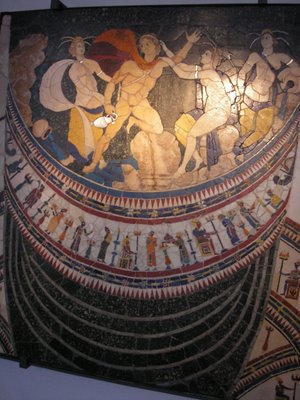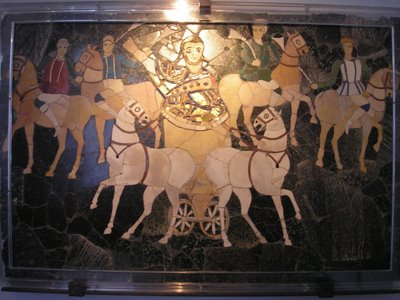Late Antique Opus Sectile
Not much survives from the decoration of the so-called Basilica of Junius Bassus on the Esquiline, but there are four panels located in two different museums in Rome: the Museo Nazionale Romano located in Palazzo Massimo alle Terme and the Palazzo dei Conservatori in the Capitoline Museums. 



The Electa guide book for Palazzo Massimo gives us the following helpful information:
Two panels from the Basilica of Junius Bassus, consul in AD 331, show the extraordinary luxury that characterised the private residences of the artistocratic urban class of the 4th century AD. One panel represents the myth of Hylas abducted by the Nymphs and the other shows the beginning of a race at the circus. Along with two other panels which are now part of the collections at the Palazzo dei Conservatori, this panel belongs to the wall-decoration of a large hall which was a private baslica in a luxurious structure near the Esquiline. The existence of an inscription allows us to identify the hall as the property of the consul Junius Bassus, father of the Roman prefect of the same name. The latter, a Christian, died in AD 359.
After the hall was discovered in the 15th century it was destroyed, but all of the panels in opus sectile were seen and drawn by the well-known Renaissance artist Giuliano da Sangallo, who described them as a 'cosa meravigliosa' (thing of wonder).

